3-Acetyl-2,5-dichlorothiophene
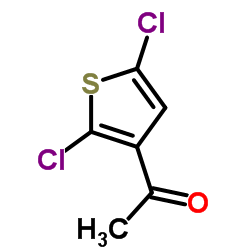
3-Acetyl-2,5-dichlorothiophene structure
|
Common Name | 3-Acetyl-2,5-dichlorothiophene | ||
|---|---|---|---|---|
| CAS Number | 36157-40-1 | Molecular Weight | 195.066 | |
| Density | 1.5±0.1 g/cm3 | Boiling Point | 233.9±40.0 °C at 760 mmHg | |
| Molecular Formula | C6H4Cl2OS | Melting Point | 37-40 °C(lit.) | |
| MSDS | Chinese USA | Flash Point | 95.3±27.3 °C | |
| Symbol |

GHS07 |
Signal Word | Warning | |
| Name | 3-Acetyl-2,5-dichlorothiophene |
|---|---|
| Synonym | More Synonyms |
| Density | 1.5±0.1 g/cm3 |
|---|---|
| Boiling Point | 233.9±40.0 °C at 760 mmHg |
| Melting Point | 37-40 °C(lit.) |
| Molecular Formula | C6H4Cl2OS |
| Molecular Weight | 195.066 |
| Flash Point | 95.3±27.3 °C |
| Exact Mass | 193.935989 |
| PSA | 45.31000 |
| LogP | 2.82 |
| Vapour Pressure | 0.1±0.5 mmHg at 25°C |
| Index of Refraction | 1.576 |
| InChIKey | GYFDNIRENHZKGR-UHFFFAOYSA-N |
| SMILES | CC(=O)c1cc(Cl)sc1Cl |
| Storage condition | Refrigerator |
Synonym:None Section 2 - COMPOSITION, INFORMATION ON INGREDIENTS
Risk Phrases: 20/21/22 Section 3 - HAZARDS IDENTIFICATION EMERGENCY OVERVIEW
Harmful by inhalation, in contact with skin and if swallowed.The toxicological properties of this material have not been fully investigated. Potential Health Effects Eye: May cause eye irritation. Skin: May cause skin irritation. May be harmful if absorbed through the skin. Ingestion: The toxicological properties of this substance have not been fully investigated. May be harmful if swallowed. Inhalation: The toxicological properties of this substance have not been fully investigated. May be harmful if inhaled. Chronic: No information found. Section 4 - FIRST AID MEASURES Eyes: Flush eyes with plenty of water for at least 15 minutes, occasionally lifting the upper and lower eyelids. Get medical aid immediately. Skin: Get medical aid immediately. Flush skin with plenty of water for at least 15 minutes while removing contaminated clothing and shoes. Wash clothing before reuse. Ingestion: If victim is conscious and alert, give 2-4 cupfuls of milk or water. Never give anything by mouth to an unconscious person. Get medical aid immediately. Inhalation: Get medical aid immediately. Remove from exposure and move to fresh air immediately. If not breathing, give artificial respiration. If breathing is difficult, give oxygen. Notes to Physician: Antidote: None reported. Section 5 - FIRE FIGHTING MEASURES General Information: As in any fire, wear a self-contained breathing apparatus in pressure-demand, MSHA/NIOSH (approved or equivalent), and full protective gear. Extinguishing Media: Use water spray to cool fire-exposed containers. Use extinguishing media most appropriate for the surrounding fire. Section 6 - ACCIDENTAL RELEASE MEASURES General Information: Use proper personal protective equipment as indicated in Section 8. Spills/Leaks: Absorb spill with inert material (e.g. vermiculite, sand or earth), then place in suitable container. Clean up spills immediately, observing precautions in the Protective Equipment section. Avoid generating dusty conditions. Provide ventilation. Section 7 - HANDLING and STORAGE Handling: Wash thoroughly after handling. Remove contaminated clothing and wash before reuse. Use only in a well-ventilated area. Minimize dust generation and accumulation. Avoid contact with eyes, skin, and clothing. Avoid ingestion and inhalation. Storage: Store in a cool place in the original container and protect from sunlight. Store in a cool, dry, well-ventilated area away from incompatible substances. Keep containers tightly closed. Section 8 - EXPOSURE CONTROLS, PERSONAL PROTECTION Engineering Controls: Use adequate general or local explosion-proof ventilation to keep airborne levels to acceptable levels. Exposure Limits CAS# 36157-40-1: Personal Protective Equipment Eyes: Wear appropriate protective eyeglasses or chemical safety goggles as described by OSHA's eye and face protection regulations in 29 CFR 1910.133 or European Standard EN166. Skin: Wear appropriate gloves to prevent skin exposure. Clothing: Wear appropriate protective clothing to prevent skin exposure. Respirators: Follow the OSHA respirator regulations found in 29 CFR 1910.134 or European Standard EN 149. Use a NIOSH/MSHA or European Standard EN 149 approved respirator if exposure limits are exceeded or if irritation or other symptoms are experienced. Section 9 - PHYSICAL AND CHEMICAL PROPERTIES Physical State: Solid Color: Not available. Odor: Not available. pH: Not available. Vapor Pressure: Not available. Viscosity: Not available. Boiling Point: Not available. Freezing/Melting Point: 37 - 40 deg C Autoignition Temperature: Not available. Flash Point: > 110 deg C (> 230.00 deg F) Explosion Limits, lower: Not available. Explosion Limits, upper: Not available. Decomposition Temperature: Solubility in water: Specific Gravity/Density: Molecular Formula: C6H4Cl2OS Molecular Weight: 195.07 Section 10 - STABILITY AND REACTIVITY Chemical Stability: Stability unknown. Conditions to Avoid: Incompatible materials, dust generation. Incompatibilities with Other Materials: Strong oxidizing agents. Hazardous Decomposition Products: Hydrogen chloride, carbon monoxide, oxides of sulfur, carbon dioxide. Hazardous Polymerization: Has not been reported Section 11 - TOXICOLOGICAL INFORMATION RTECS#: CAS# 36157-40-1 unlisted. LD50/LC50: Not available. Carcinogenicity: 3-Acetyl-2,5-dichlorothiophene - Not listed by ACGIH, IARC, or NTP. Section 12 - ECOLOGICAL INFORMATION Section 13 - DISPOSAL CONSIDERATIONS Dispose of in a manner consistent with federal, state, and local regulations. Section 14 - TRANSPORT INFORMATION IATA Not regulated as a hazardous material. IMO Not regulated as a hazardous material. RID/ADR Not regulated as a hazardous material. Section 15 - REGULATORY INFORMATION European/International Regulations European Labeling in Accordance with EC Directives Hazard Symbols: XN Risk Phrases: R 20/21/22 Harmful by inhalation, in contact with skin and if swallowed. Safety Phrases: S 36/37 Wear suitable protective clothing and gloves. WGK (Water Danger/Protection) CAS# 36157-40-1: No information available. Canada None of the chemicals in this product are listed on the DSL/NDSL list. CAS# 36157-40-1 is not listed on Canada's Ingredient Disclosure List. US FEDERAL TSCA CAS# 36157-40-1 is not listed on the TSCA inventory. It is for research and development use only. SECTION 16 - ADDITIONAL INFORMATION N/A |
| Symbol |

GHS07 |
|---|---|
| Signal Word | Warning |
| Hazard Statements | H302-H312-H315-H319-H332-H335 |
| Precautionary Statements | P261-P280-P305 + P351 + P338 |
| Personal Protective Equipment | dust mask type N95 (US);Eyeshields;Gloves |
| Hazard Codes | Xn:Harmful; |
| Risk Phrases | R20/21/22;R36/37/38 |
| Safety Phrases | S26-S36-S36/37/39-S22-S36/37 |
| RIDADR | NONH for all modes of transport |
| WGK Germany | 3 |
| HS Code | 29349990 |
|
~50% 
3-Acetyl-2,5-di... CAS#:36157-40-1 |
| Literature: Sharf, V. Z.; Taits, S. Z.; Gurovets, A. S.; Vol'kenshtein, Yu. B.; Fabrichnyi, B. P.; Shcherbakova, S. I. Chemistry of Heterocyclic Compounds (New York, NY, United States), 1982 , vol. 18, # 2 p. 130 - 133 Khimiya Geterotsiklicheskikh Soedinenii, 1982 , vol. 18, # 2 p. 171 - 175 |
| Precursor 2 | |
|---|---|
| DownStream 10 | |
| HS Code | 2934999090 |
|---|---|
| Summary | 2934999090. other heterocyclic compounds. VAT:17.0%. Tax rebate rate:13.0%. . MFN tariff:6.5%. General tariff:20.0% |
|
Synthesis and antimicrobial evaluation of new chalcones containing piperazine or 2,5-dichlorothiophene moiety.
Bioorg. Med. Chem. Lett. 17 , 5321-4, (2007) Two new series of chalcones have been synthesized by reacting 1-(4-piperazin-1-yl-phenyl)ethanone and 1-(2,5-dichloro-3-thienyl)-1-ethanone with different substituted benzaldehydes in turn by Claisen-... |
|
|
Enantioselective Synthesis of Brinzolamide (AL-4862), a New Topical Carbonic Anhydrase Inhibitor. The “DCAT Route” to Thiophenesulfonamides. Conrow RE, et al.
Org. Process Res. Dev. 3(2) , 114-20, (1999)
|
|
|
Facile synthesis of 2-(substituted amino)-4H-thieno [3, 2-e]-1, 3-thiazin-4-ones. Abu-El-Halawa R, et al.
Monatsh. Chem 139(10) , 1251-55, (2008)
|
| 1-(2,5-Dichlorothiophen-3-yl)ethanone |
| 1-(2,5-Dichloro-3-thienyl)ethanone |
| EINECS 252-893-3 |
| MFCD00014522 |
| Ethanone, 1-(2,5-dichloro-3-thienyl)- |
| 3-Acetyl-2,5-dichlorothiophene |

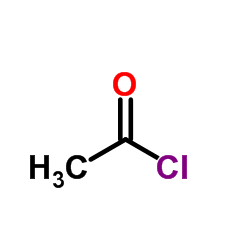
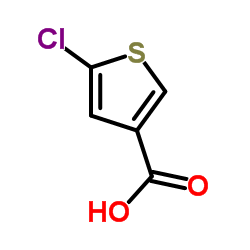 CAS#:36157-42-3
CAS#:36157-42-3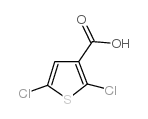 CAS#:36157-41-2
CAS#:36157-41-2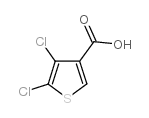 CAS#:123418-70-2
CAS#:123418-70-2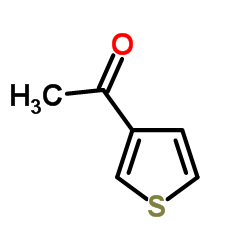 CAS#:1468-83-3
CAS#:1468-83-3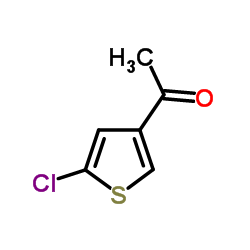 CAS#:58119-67-8
CAS#:58119-67-8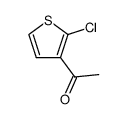 CAS#:81557-66-6
CAS#:81557-66-6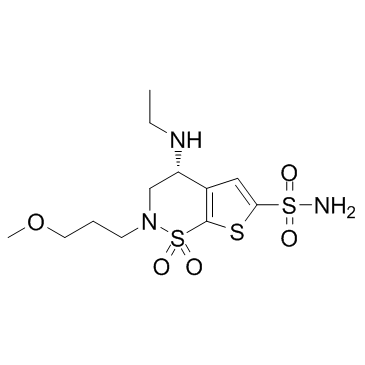 CAS#:138890-62-7
CAS#:138890-62-7![(S)-3,4-Dihydro-4-hydroxy-2-(3-methoxypropyl)-2H-thieno[3,2-e]-1,2-thiazine-6-sulfonamide 1,1-dioxide structure](https://image.chemsrc.com/caspic/053/154127-42-1.png) CAS#:154127-42-1
CAS#:154127-42-1 CAS#:160982-09-2
CAS#:160982-09-2![(S)-6-Chloro-2-(3-methoxypropyl)-3,4-dihydro-2H-thieno[3,2-e][1,2]thiazin-4-ol 1,1-dioxide structure](https://image.chemsrc.com/caspic/230/160982-13-8.png) CAS#:160982-13-8
CAS#:160982-13-8
